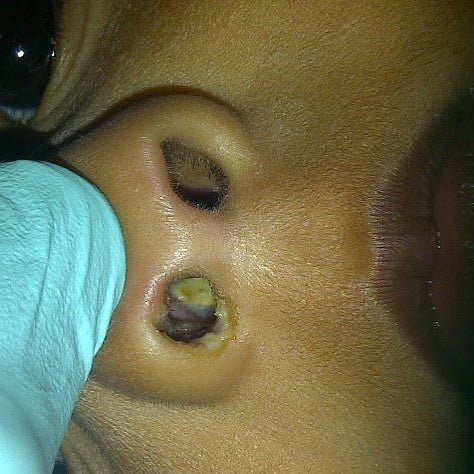Rhinolith – Nasal Stone (Calculi)
The word rhinolith is derived from the Greek words “rhino” (nose) and “lithos” (stone). While they are relatively rare, these stones can develop from usually the introduction of a foreign object, such as a small bead, into the nose. Over time, minerals, and salts from the body’s mucous and fluids accumulate around the foreign body, gradually hardening into a stone-like structure called Rhinolith.
Signs and Symptoms: The symptoms often vary depending on the size and location of the rhinolith within the nasal cavity. Common signs include:
- Nasal Obstruction leading to difficulty breathing through the affected nostril.
- Foul-smelling nasal discharge, often accompanied by blood, might be present due to the irritation caused by the stone.
- Pain or Discomfort: Individuals may experience pain or discomfort around the affected area, which can radiate to the surrounding facial regions.
- Alteration of Smell: Some people may notice changes in their sense of smell.
Diagnosis requires a combination of patient history, physical examination, and medical imaging techniques like X-rays to visualize the presence, size, and exact location within the nasal cavity.
Treatment Approaches: The treatment typically involves complete removal. Small and accessible ones are removed using specialized instruments in the outpatient units. Larger or more complex cases might require endoscopic surgery.


Recent Comments